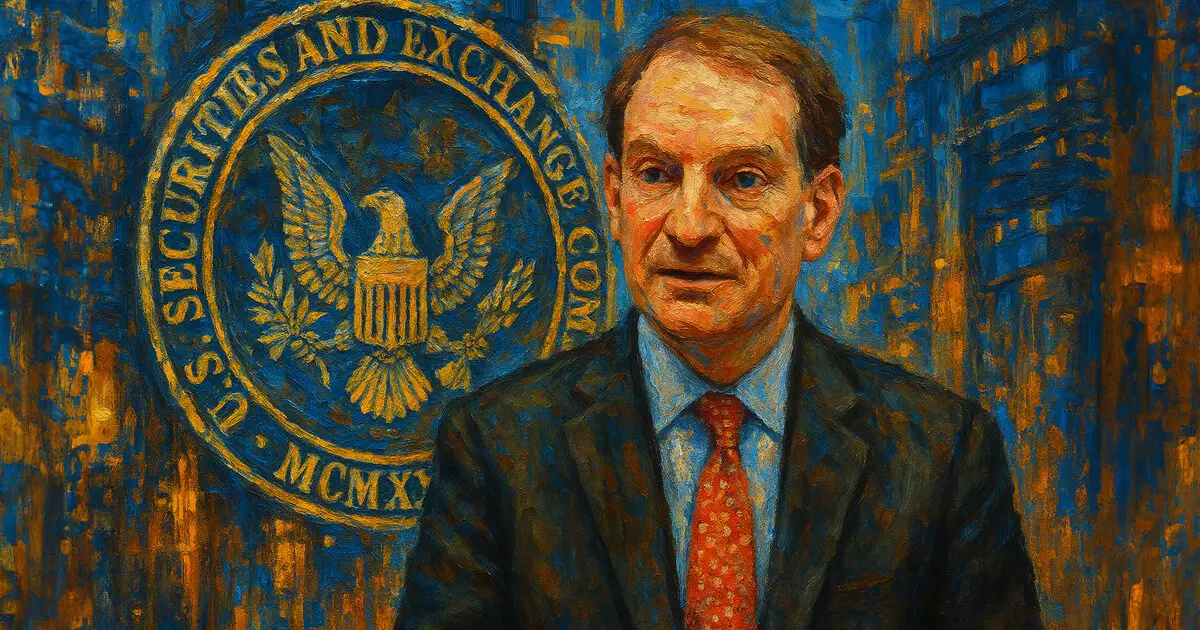The Securities and Exchange Commission’s (SEC) latest initiative, “Project Crypto,” epitomizes the agency’s ongoing attempt to cling to outdated paradigms in an evolving financial landscape. While the lofty rhetoric claims to foster innovation and protect investors, behind the scenes, this effort appears to serve as a manifestation of regulatory hubris, risking stifling the very innovation it supposedly champions. Despite claims of a “modernization” effort, what we are truly witnessing is an overreach that threatens to undermine the decentralized ethos of blockchain technology. The SEC’s assumption that they can categorize and control this complex and borderless ecosystem within a rigid regulatory framework is fundamentally misguided. Their approach reflects a fundamental misunderstanding: technology constantly outpaces regulation, and attempting to impose old rules on new paradigms often results in a chilling effect on innovation, rather than fostering it.
The Illusion of Clarity and the Reality of Legislation Diffusion
Chair Paul Atkins’ emphasis on defining crypto assets and establishing clarity around token classifications sounds reasonable on paper. However, the reality is far more muddled. By presuming that most crypto assets are not securities, the SEC attempts to create a safe harbor for certain tokens, yet this belief underestimates the fluidity and diversity of the crypto landscape. What constitutes an “investment contract” remains a gray area that the SEC’s broad brush cannot adequately paint. Furthermore, efforts to carve out exemptions for token offerings and airdrops feel more like bandaids over gaping holes in their legal framework rather than substantive solutions. Meanwhile, the attempt to “onshore” offshore activities inherently assumes that the U.S. can be the regulatory leader in a globalized digital economy—an increasingly naïve position. As blockchain projects continue to operate beyond borders, the SEC’s regulatory ambitions risk becoming obsolete before they even take form.
The False Promise of Investor Protection Without Innovation Stifling
The SEC’s pledge to “protect” investors is a double-edged sword. While protecting retail investors from scams and manipulation is legitimate, the agency’s often paternalistic approach can suffocate legitimate innovation. The push to update custody requirements and facilitate the trading of tokenized securities aims to keep crypto domestically relevant, but it could inadvertently entrench legacy financial institutions at the expense of true decentralization. The drive to integrate crypto trading alongside traditional securities within a unified license framework appears to be an attempt to control and regulate rather than foster a healthy competitive environment. This “consolidation” may lead to increased barriers for startups and disruptors trying to carve out space within the on-chain economy, potentially guiding innovation into a slow, bureaucratic pipeline under the guise of regulation.
The Double Standard and the Hypocrisy of On-Chain Principles
Interestingly, Atkins claims that “self-custody” is a core American value, but the SEC’s actions cast doubt on this assertion. Their inclination to impose strict custody and licensing requirements signals a preference for centralized control, which conflicts with the very essence of blockchain—self-sovereignty and decentralization. This contradiction exposes a hypocrisy that underpins much of the SEC’s strategy: they claim to support innovation, yet they simultaneously seek to limit it through heavy-handed regulation. The proposed “innovation exemption” might offer a temporary reprieve, but it smacks of regulatory fig leaf rather than genuine reform. The conditions—reporting requirements, allowlisting, and compliance standards—still favor established players over true innovators. If the SEC truly valued American leadership in blockchain, it would realize that innovation often flourishes best outside heavy regulation, not because of it.
The Core Issue: Will Regulations Enable or Enslave?
Ultimately, “Project Crypto” reveals the central dilemma of trying to shoehorn blockchain innovation into a legacy regulatory model. The initiative appears more reactive than visionary—an attempt to preserve the dominance of traditional finance at a time when disruptive blockchain companies threaten to bypass the system altogether. The SEC’s approach, with its focus on classification, exemptions, and safe harbors, risks creating a controlled environment that favors incumbents and retards true digital evolution. If real progress is to be made, the focus should shift from trying to control every aspect of blockchain activity to embracing its fundamental principles: decentralization, permissionless innovation, and financial sovereignty. Anything less risks turning the promise of blockchain into a regulation-enforced illusion—one that benefits gatekeepers, not users, and prevents the United States from leading the next wave of financial innovation.

